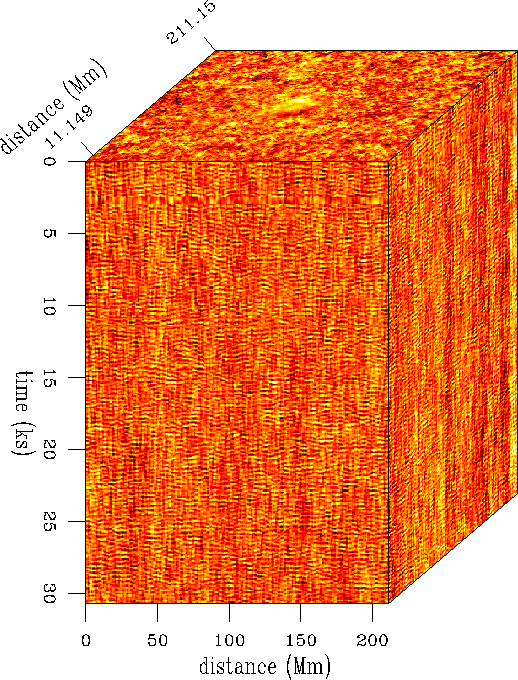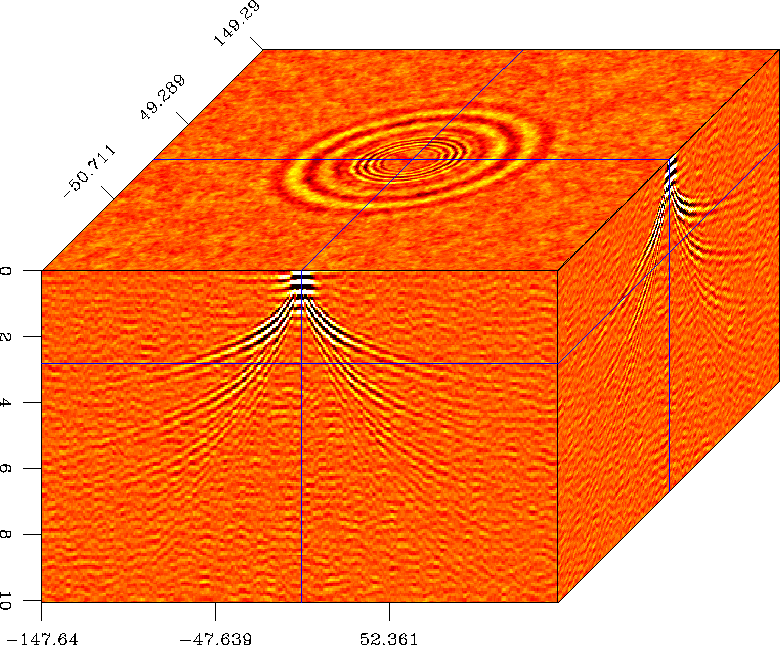 |
Figure 2 Cube of MDI data.
![[*]](http://sepwww.stanford.edu/latex2html/cross_ref_motif.gif) shows a cube of raw velocity data from the
MDI instrument.
The data have been transformed to Cartesian coordinates by
projecting high-resolution data from an area approximately
18
shows a cube of raw velocity data from the
MDI instrument.
The data have been transformed to Cartesian coordinates by
projecting high-resolution data from an area approximately
18 |
Time-variable features of Figure ![[*]](http://sepwww.stanford.edu/latex2html/cross_ref_motif.gif) fall into two
distinct spectral windows.
The low temporal frequency events (<1.5 mHz) are related to
solar convection, while the higher frequency events
are related to acoustic wave propagation.
We were interested in studying acoustic wave phenomena; so as a
preprocessing step, we removed the lower frequency spectral
window by applying a low-cut filter to the data.
fall into two
distinct spectral windows.
The low temporal frequency events (<1.5 mHz) are related to
solar convection, while the higher frequency events
are related to acoustic wave propagation.
We were interested in studying acoustic wave phenomena; so as a
preprocessing step, we removed the lower frequency spectral
window by applying a low-cut filter to the data.
Figure ![[*]](http://sepwww.stanford.edu/latex2html/cross_ref_motif.gif) shows the impulse response derived by
multi-dimensional spectral factorization. Due to the lack of coherent
reflectors within the solar interior, no reflection events are
visible. The strong vertical velocity gradient causes the first
arrival to be a diving wave. Later arrivals are the multiple events
of increasing order (PP, PPP etc.) illustrated in
Figure
shows the impulse response derived by
multi-dimensional spectral factorization. Due to the lack of coherent
reflectors within the solar interior, no reflection events are
visible. The strong vertical velocity gradient causes the first
arrival to be a diving wave. Later arrivals are the multiple events
of increasing order (PP, PPP etc.) illustrated in
Figure ![[*]](http://sepwww.stanford.edu/latex2html/cross_ref_motif.gif) .
.
 |
![[*]](http://sepwww.stanford.edu/latex2html/movie.gif)
 |